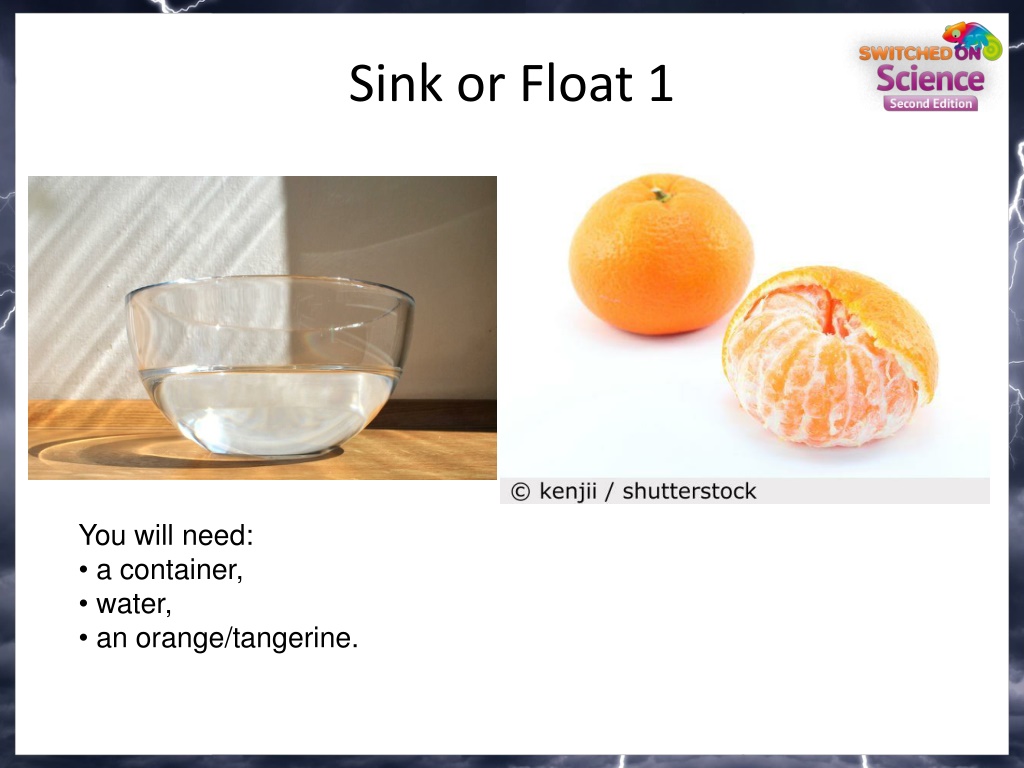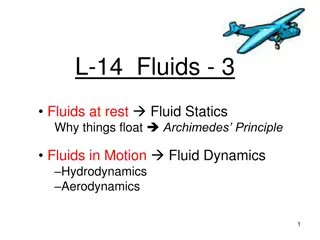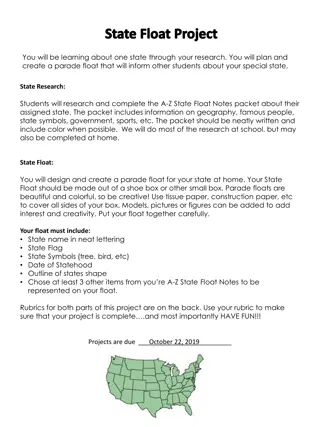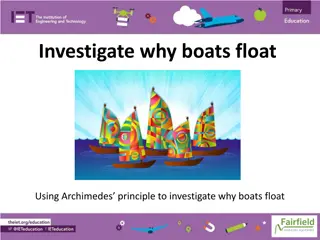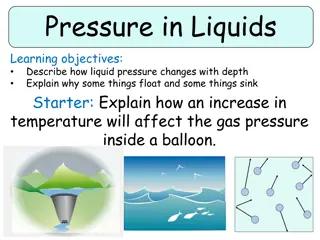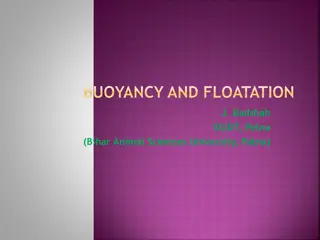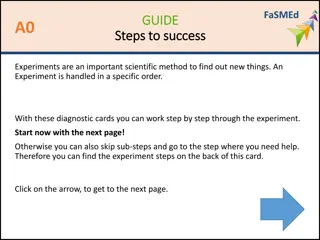Fun Science Experiments: Sink or Float Activities
Conduct two engaging sink or float experiments using items like an orange, tangerine, water, and tin foil. Learn about buoyancy, density, and the role of trapped air pockets in objects floating. Explore comparative tests and understand why objects either sink or float in water.
Download Presentation

Please find below an Image/Link to download the presentation.
The content on the website is provided AS IS for your information and personal use only. It may not be sold, licensed, or shared on other websites without obtaining consent from the author. Download presentation by click this link. If you encounter any issues during the download, it is possible that the publisher has removed the file from their server.
E N D
Presentation Transcript
Sink or Float 1 You will need: a container, water, an orange/tangerine.
A comparative test What do you think will happen when you put the orange into the bowl of water? What did you observe? Now half peel the orange and place in the water. Repeat with a orange. What is your conclusion? fully peeled What other comparative tests could you carry out? Try changing the amount of water in the container.
Sink or Float 2 You will need: a container water 2 pieces of tin foil (the same area)
A comparative test Scrunch 1 piece of tin foil and place on to the water. Take the second piece of foil and submerge it then scrunch it under the water. What did you observe when you scrunched the foil in and out of the water? What is your conclusion? What other comparative tests could you carry out to test your conclusion (idea)? Try folding instead of scrunching.
Why does this happen?
The floating objects do so because of trapped air pockets. The peel on an orange is filled with tiny air pockets so we should have seen the orange with its peel float and without its peel, it should have sank. Even though the orange becomes lighter because you have removed the peel, it has become more dense and decreases its buoyancy. When scrunching up the tinfoil above the water, you will have trapped air in certain parts, enabling it to float. When the submerged tinfoil was scrunched up, there was no air around it to trap. What happened if you scrunched the tinfoil too tightly? Vocabulary Density the amount of space an object takes up linked to its mass. E.g 1m2 of bubble wrap is less dense than 1m2 of a paving stone even though they take up the same space as the bubble wrap has a lot of air in it meaning it has a low mass (heaviness). Buoyancy the ability of an object to float in water or another liquid.
